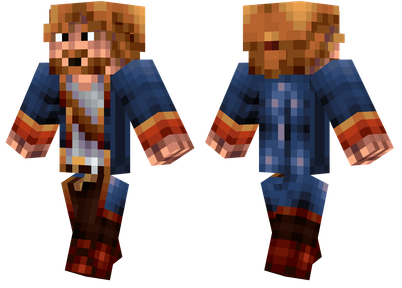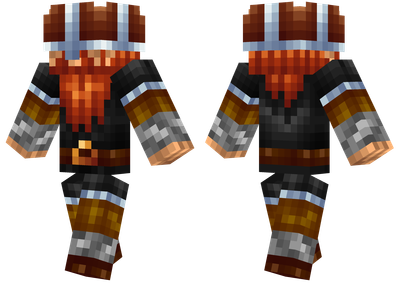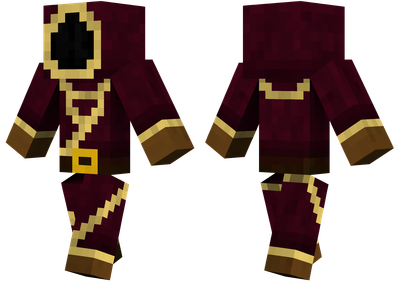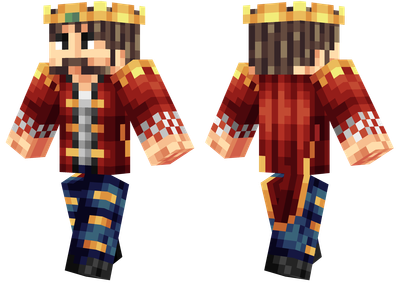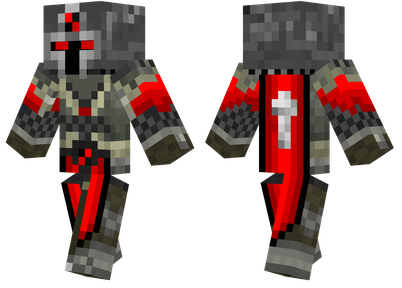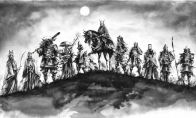This tutorial is set by the author to use the CC By-NC-SA protocol.
Note: The NCO module version used in this tutorial is 2O.0.8. This version of the i18N module and the Sinicization Universal bag cannot completely cover the Chineseization, and the lack of part of the block in its default configuration (such as neutron protective screen, neutron radiation radiationThe port), the heat dissipation data and effectiveness of some heat sinks are also different.Please pay attention to the game module version in actual play!Some of the sinization displayed by the tutorial is self -control and self -use Chinese, for reference only. For communication, please focus on the official/i18N sinicization provided by the encyclopedia!
Foreword:
Compared with the next door, the tutorial will introduce more straightforwardly how to build a reactor that can run, and how to use it to generate electricity.The tutorial is just a guidance, and it does not provide an excellent heat dissipation construction plan.I can learn shallowly and have limited personal ability.
The knowledge related to all reality related to reality involved in this tutorial comes from public information that can be queried.What?Do you ask me the critical quality of uranium?Sorry I am just a civil engineering brother, I can’t get contact with this kind of confidential information qwq
The additional industrial/automation modules used in this tutorial are: thermal expansion series, EIO, AA, EXU2, AE2 (what is AE2? Unfamiliar).I recommend using various automated modules with NCO for play!
Part 1: Solid -state thermal core
1. Preparation
First of all: NCO is not a module that is very suitable for early development, and its input and output of power generation are relatively low. It is recommended to develop in the middle of the game.Here, the author has defaults to the accumulation of machines, resources, and energy, and began to develop the NCO technology line.
1.1. Necessary machine
NCO adds many machines, and several machines below are necessary machines for developing solid -state nuclear power:
From top to bottom, from left to right, respectively:
(First line) electrolytic machine, furnace, fluid dissolving machine, chemical reaction machine, crystalline machine
(Line 2) Small manufacturing machines, rock crusher, separation machine, alloy furnace, fuel processing machine
As for the manufacturing and use of these machines, it is not the focus of today. The author will explain it when needed.For details, please check the synthetic method and specific use of the Jei synthesis table.
1.2. Necessary equipment
Since it is necessary to deal with radioxin, the dangerous nuclear radiation must be a very headache.To cope with radiation, we need to prepare the following equipment:
A whole set of protective clothing: provides high radiation resistance to reduce actual radiation.
A Gege counters: to view the current accumulated irradiating level, the current level of radiation strength, and block background radical strength.
A certain anti -spokes reserve: used to eliminate its accumulated irradiated intensity, the more the better.
It is worth mentioning that the Gege counters are placed in the item bar and will provide the UI as shown in the figure. The yellow bar indicates the cumulative radiation level.The armor of the protective board is reduced.Right -click with the Gege counters to view the background irradiation level of the current block, your own irradiation intensity, and percentage.
2. Know the fuel
The NCO solid reactor has hundreds of fuels, which are made of various radioactive nuclein with different processing processes. Each fuel has its own parameters and scope of applications.Let's take a look at these fuels and introduce the various parameters of the fuel in detail.
2.1. Nuclein classification
This part requires the player to understand the following two nouns in advance: nuclein and homogenin.
NCO中可以用来制作核燃料的重元素分别有:铀(Uranium,U)、钚(Plutonium,Pu)、镎(Neptunium)、镅(Americium,Am)、锔(Curium,Cm)、锫(Berkelium,BK) and Californium (CF), there are two elements: Thorium, Th) and ProtActinium.
According to whether the amount of fuel can be made and the consumption of fuel, we can divide the nucleo into three categories: "poverty nuclei" and the corresponding "nucleo", as well as special nuclein specifically used to make RTG.Here we use our common uranium and 见 example:
From top to bottom, from left to right, respectively: U-233, U-235, U-238
PU-239, PU-241, PU-242 and PU-238
=================================
Intersectionwarn!
The following parts have the content that the author is defined by self -definition!
It is only applicable to discussions within the scope of this tutorial!
If there is a standard/better definition, please remind the author to modify it!
=================================
As we all know, U-238 is called "depleted urnium (DU (DU" due to its long half-life and relatively inertia to fission reactions. Strictly speaking, most of the components of DU are U-238, only less than less than0.711%U-235 content).When making uranium -related fuels in the game, 238 always consumes more than 235/233.In this tutorial, when this kind of fuel is made, a large amount of nucleo is called "poor nuclein" (such as depleted uranium U-238, Poor Pu-242, etc.).It is called "richer" (such as U-233/235, PU-239/241) (Note: In fact, there is no saying that there is no "richer prime".definition).
There is one more thing about "richer". Except for certain elements (TH, NP, and BK), they contain two types of homogenin, and the most obvious representation of the same type of fuel (the same concentration, the same process) of the same type of fuel (the same concentration, the same process)It is based on the heat production, so here is the "richer" isotope with a large amount of heat production as "high -energy isotope", and the other is "low -energy isotope".As mentioned above, the fuel produced by U-233 [ZA] Heu-233 is 810H/T, and [ZA] Heu-235 with U-235 is only 450H/T.235 is a low -energy isotope.
In addition, there is a special nuclein that can only be used to make RTG in the game.In the game, only the following three types of nucleo are: PU-238, AM-241 and CF-250.
(There are four RTGs, and there are three special nuclein, U-238, you are not one of them)
2.2. Fuel classification
After talking about the nuclein, the fuel should be talked about below.Here, the fuel used in this tutorial is referred to as the speed check next door, except for the latest TRISO type.
"Poor nuclear" plus "richer", which can be rubbed out of the most basic nuclear fuel in the workbench according to a certain ratio.Depending on the concentration of "nucleus", the same "nucleus" has two basic fuels: LE-and HE-, which represent low concentrations and high concentrations (High Enriched).After the naming of basic fuel, the corresponding "nuclear" symbol constitutes the abbreviation of this basic fuel, such as the following LEU-233, HEU-233, LEU-235 and Heu-235:
The texture is almost the same
The basic nuclear fuel cannot be thrown directly into the reactor to burn, and it needs to be further processed to make it a oxidation type (Oxide, referred to as [OX]), nitride (NITRIDE (Ni]), and Zirconium all, Referred to as [ZA]) and Triso type*(Tri-Structural Isotropic ([TR]), but in the current version, Triso fuel-related nuclear reactions have not been installed.The abbreviations of the four nuclear fuels are made of prefix+basic fuel abbreviation. Taking HEU-235 as an example, the following is [OX] Heu-235, [Ni] Heu-235, [ZA] Heu-235, [TR] Heuuuuuuuuuu, Heuu, Heuu-235 and corresponding exhaust fuel:
*Supplement: Triso's full name Tri-Structural isotropic, the three-layer structure is the same (small particle nuclear fuel).Triso fuel in real life is an emerging fuel processing process that wraps oxidized nuclear fuel in three layers of graphite and silicon carbide ceramics to form small particles, and then processes a entire fission fuel unit.According to news reports, the Triso fuel can maintain its own stability at higher temperatures and can resist the expansion of nuclear accidents at high temperature at high temperature. Therefore, it is considered to be able to prevent nuclear reactions such as pile melting.There are two special basic fuels here: TBU and MIX.TBU refers to 增-value-added uranium nuclear fuel, which is to put the ingot/pink powder in a neutron pile and receive neutron irradiation into 镤-rich pink powder, and then put it into the decayer of the decayer; and MIX refers to 钚 钚 钚 钚 钚Uranium hybrid fuel is made of two "rich" plus depleted uranium (uranium-238) mixed.Like other basic fuels, TBU and MIX are also oxidized, nitride, 锆 alloy type and Triso type, but for MIX, there are four specifically abbreviations: MOX (next door IC2 means that I am familiar), MNI, MZA and MTRISO, corresponding to oxidation types, nitride types, alloy alloy types and Triso types.The following are the basic fuels and four processed variants of TBU's basic fuels and four processing variants, as well as two MIX (MIX-239 and MIX-241), including their respective depletion fuels: their respective depletion fuels:
TBU family bucket
2.3. Fuel parameters
Pressing Shift, all kinds of fuels that can directly participate in nuclear reactions will have a series of parameters. The [ZA] Heu-235 that you like to see during power generation is used as an example:
Basic reaction time indicates that a fuel pill becomes the burning time of exhausted pills when the nuclear reactor runs normally.It determines the burning time of fuel.
Basic heat production represents the foundation of a fuel pill foundation, which is the basis for the construction of the internal heat dissipation system of the reactor.The actual cooling design and actual heat production of the reactor are closely related to this indicator.
Basic efficiency refers to the increase in thermal production efficiency of a fuel pill.In the process of heat production, the actual heat dissipation volume will be multiplied by this parameter and the efficiency parameters of the subsequent indicators to obtain the actual heat production.
The critical neutron flux requires the minimum value of the (slow) neutron flux required with a fission reaction of this fuel.It is related to the design and efficiency of the reactor foundation.
This section only needs to have a basic cognition of these parameters. The detailed use of these parameters will be detailed in the design part of the reactor design below.It is worth noting that the four parameters of the four types of fuels of the same fuel are different. In general, the four parameters of oxidized fuels are relatively balanced; and nitride fuels have a longer basic response time, lower lower ones, lower ones, lower ones, lower ones, and lower ones.Basic heat production and high critical neutron flux demand, relatively "conservative"; the fuel of Lainery alloy has a short basic response time, high basic heat production, low critical neutron flux demand, and low demand for neutron volume, as well as, as well as, as well as, and low critical neutron flux demand, as well as, as well as, as well as the demand for neutron volume.The slightly higher basic efficiency is more "radical" as a whole; Triso fuel except for the remaining indicators of the basic efficiency as the same as the alloy type, it is more suitable for "production elements" without much to match production heat.The design of the reactor and the four parameters of the selection of fuel should be closely related to different fuel design different reactors.By the way, the four different types of basic fuels of the same basic fuel are close to the basic reaction time*The value of basic heat production is very close. In other words, the total basic heat production is certain.
Third, the understanding, design and construction of solid -state fission reactor
Finally came to our core part, the solid -state fission reactor.Before we start to build a reactor, we also need to understand the basic knowledge of the reactor.
3.1. The outer component and the outer frame of the reactor
In order to build a complete, running solid -state fission reactor, we need at least the following components:
A fission controller is used as the core of the reactor to view the parameters of the reactor when the reactor runtime;
Several reactors and transparent shells are used as the shell of the reactor;
The fluid interaction of the reactor (the entrance and exit of the fission reactor) and the interactive interaction of the item (port fuel unit port).
It is used to stimulate the neutron source that stimulates fission reactions;
right!No neutron port!No neutron port!
The figure below shows the controller, shell and transparent shell of the reactor, the entrance (cross pattern) and the fuel unit port (X -shaped pattern), and three different neutron sources.
The NCO's reactor is a large bonded multi -square structure with a minimum of 3*3*3 (the internal size is 1*1*1), and the maximum is 26*26*26 (internal size 24*24*24), each eachThe side length can be different. The frame (edge) must be the reactor shell, while the remaining six planes consist of the reactor shell/transparent shell, two interaction ports, the proper neutron source and the up to 1 reactor controller compositionEssenceWhen building a reactor, make sure that its housing is not allowed to be placed inside the reactor, and does not allow the inner and outer components (including the shell, various radiator, etc.) in the interior to contact other reactors, otherwise the reactor will not be correctly identified.Correctly building a reactor will change its external structure material.As shown in the figure below is a complete 3*3*3 minimum reactor of the 3*3*3 except for the molten heap: here is an additional input and output of the reactor.NCO's reactor cannot have a visual GUI as us like other machines for us to directly add/get fuel and coolant. What we can do is to add/get it with various automated equipment.Reasons for automated modules.Except for the neutron source, the remaining external functional blocks of NCO do not have placed requirements (as long as they are not placed on the edge/top), the two ports can be used as ports of input/output at the same time, so use certain pipelines with a relatively high degree of modular integration of pipeline integration.For groups (such as EIO), at least only one port is required to achieve the input/output of the fuel/coolant.
A fission reactor that is running
By the way, after the reactor is built, the coolant/thermal cooler cache it owns is correlated with the size of the reactor. After the fuel is filled, the cache cache will be fixed after filling all the internal fuel units.Share similar interface.
3.2. Internal components of the reactor
In addition to the external framework of the reactor, the internal design of NCO is also an extremely important part.Because the internal placement of the reactor involves two important concepts: neutron channels and clusters cannot be briefly explained, so we first introduce the internal components of the reactor.
3.2.1. Fuel unit
This is the fuel unit of the reactor. The fuel entered from the object port will be put here. One fuel unit can only store 1 fuel, and it cannot be removed after installing it.It is the core of the internal design of the reactor, and its number determines the size of your reactor at the same time.You need to design a neutral channel plan and construct the heat sink cluster around it.Moreover, when you do not have enough heat dissipation to cope with the heat production of fuel, it will become the first melted object.
By the way, in this version, the fuel unit does not have GUI, so fuel filtration cannot be set.The fuel hybrid scheme next door cried and fainted.
3.2.2. The radiator/heat dissipation unit
These are the heat sinks of the reactor (the author is used to the cooling unit). Their role is to disperse the heat production of the nuclear reaction to avoid melting the core.The heat dissipation unit has its own heat dissipation efficiency and effective conditions. It is not a wise measure to choose the heat dissipation unit with high heat dissipation and fill the reactor the fuel unit.It is the correct way to open the heat dissipation unit.
List of radiator
Since the author of 2O.0.8 has modified the value and working conditions of some heat sink, the specific information form of various heat dissipation units is given here: (strongly recommended to use CRTL+F to search for relevant information!)
Cooling equipment
Cooling efficiency
H/t
Working conditions
grade
("'" Means unable to expand)
Water 50
It must be exposed to at least one effective fuel unit*.
0 Iron 55
At least one effective and adjacent deceleration unit must be exposed to at least one effective and active unit.
0 Hongshi 85
Must be exposed to at least one effective fuel unit
And at least one effective and adjacent deceleration unit with active unit.
0
quartz
75
At least one effective redstone cracks must be exposed to the heat sink.
1
obsidian
70
At least two *** effective fluorite fissure heat sinking units on the same straight line must be exposed to the same straight line.
2
Hell rock
100
At least one effective obsidian fissure must be contacted.
3 '
Shockstone
110
There must be at least two ineffective deceleration units that can take effect and are adjacent to the active unit.
0
lapis lazuli
95
At least one effective fuel unit and a reactor shell must be exposed.
0
gold
105
It is necessary to contact at least two effective iron -based cracks.
1
Sea crystal
115
At least two effective water -based fissure and cooling unit must be exposed.
1
Slime
135
It must be exposed to just an effective water -based fissure and radiator unit and at least two effective lead -base cracks.
2 '
Molten stone
60
It must be exposed to at least one effective reflex unit.
0
Purple
90
It must be exposed to an effective iron -based crack fissure and cooling unit
And at least one effective end stone heat sink unit.
2
diamond
190
Must be exposed to at least one effective fuel unit
And a valid golden foundation cracked radiator unit.
2 '
Emerald
195
Must be contacted at least one effective and adjacent deceleration unit adjacent to the active unit
And a valid sea crystal stone fissure heat sinking unit.
2 '
copper
80
You must contact at least one effective water -based fissure and cooling unit.
1
tin
120
At least two effective lapigraphic stone cracks on the same straight line must be exposed to the same straight line.
1
lead
65
At least one effective iron -based fissure and heat sink must be exposed.
1
boron
165
It must be exposed to just an effective quartz fissure and cooling unit heat sinking unit
And at least one reactor shell.
2
lithium
125
At least two effective lead -base fissure and radiating unit on the same line must be exposed to the same straight line
And at least one reactor shell.
2 '
magnesium
130
It must be exposed to a vertical unit that is effective and adjacent to the active unit
And at least one reactor shell.
0 '
manganese
140
You must contact at least two effective fuel units.
0 '
aluminum
180
Must be exposed to at least one effective quartz fissure and heat sinking unit
And a valid lapigette fissure heat sinking unit.
2 '
silver
170
It must be exposed to at least one effective and effective fluorescent stone cracking and radiating unit
And a valid tinframe fissure and radiator unit.
2 '
Fluorite
155
It must be exposed to at least one effective golden foundation fissure and heat sinking unit
And a valid sea crystal stone fissure heat sinking unit.
2 '
Fluorine salt
160
Must be exposed to at least one effective reflex unit
And a valid redstone cracking heat sinking unit.
1 '
Square fluorine
150
Must be exposed
And a valid copper -based cracking heat sinking unit.
2 '
arsenic
145
At least two effective reflex units that must be exposed to the same straight line must be exposed.
0 '
Liquid nitrogen
180
It must be exposed
And a valid purple pornographic cooling heat sink.
3 '
Liquid
200
It must be exposed to just two effective redstone cracks and cooling heat sinking units
And at least one reactor shell.
1 '
Endless shadow
175
At least three effective and adjacent deceleration units must be exposed to at least three effective and active units.
0 '
凛冰
205
At least three effective fuel units must be exposed.
0 '
Note:*Effective fuel units: refers to the fuel unit that has reached a critical neutron flux intensity after being loaded into the fuel, and the fission reaction occurs.As shown in the figure below, the four fuel units of the [ZA] Heu-235 are filled out in the red frame (blocking by a neutron radiation): (It is recommended to learn the neutron flux and then look back and forth)
** Affordable deceleration unit that can take effect and is adjacent to the active unit: refers to the deceleration unit adjacent to the fuel unit as described above, as shown in the blue frame circled in the figure below: fast and graphite blocks:
*** At least two on the same straight line: refers to the two planes of the core blocks of the two squares that are in contact with, forming the structure of the ABA, as shown in the figure belowLym Soluble Clear-Leading Soluble Unit and Leading Soluble Unit-Lithium Settlement Unit-Lead Settlement Unit structure:
Here, the author marks the grades for various heat dissipation units based on the work contact conditions of the heat dissipation unit. Level 0 indicates that the units that can take effect directly with the contact with the fuel unit, the deceleration unit, the reflex, etc.The highest level in the required contact unit is N, then the unit is defined as "N+1" level; the "'" symbol indicates that it cannot be expanded. In other words, this component can no longer connect other heat dissipation units as the basis.
3.2.3. Neutrical channel components: deceleration unit and reflection unit
As we all know, the trigger chain reaction requires slow neutron irradiation nuclear fuel, and the neutron released by general chain reactions is fast neutron, which is difficult to capture by nuclear fuel.Refer to the explosion principle of uranium core nuclear bomb), or use a slower/reducer to decelerate the neutron (operating ideas of nuclear power plant), and use a neutron reflection to reflect the neutron reflex reflection area that may overflow in the nuclear reaction.Nuclear power plants are commonly used in the reducer, including graphite rods, 铍 and heavy water.The NCO simulates these components, as follows: the three squares on the left are from top to bottom: heavy water deceleration unit, 铍 铍 and graphite block, and the two squares on the right are 铍-carbon reflex units and lead-steel reflex units.EssenceRelated parameters are as follows:
The increase in the increase of the increase in the amount of the medium of the deceleration unit material 36N/T100%铍 22n/T105%graphite 10n/t110%reflective unit material reflection efficiency efficiency parameter 铍 carbon 100%50%lead-steel 50%25%25%25%25%25%25%
The parameters will be introduced in the calculation part of the neutron and clusters.
3.2.4.
I can say that because there is no neutron radiation port, this is useless ...
3.2.5. Reactor conductor
The fission reactor conductor, here you only need to know that it is a useful internal component of the reactor, the detailed function will be explained in detail in the part of the cluster below.
3.3.
3.3.1.
As mentioned above, the fission reaction requires a nuclear fuel to receive a neutron illumination with a certain intensity.In order to simulate and restore this, NCO has designed a concept of "neutron flux". In other words, we need to build a general path that belongs to neutron, so that the nuclear fuel in the fuel unit receives sufficient amount of neutron flux to start to start to startFission reaction.
For the convenience of understanding, we can make a simple assumption here:
The nuclear fuel that is stimulated or in the reaction will release unlimited "fast neutron" in the direction of the six places around it. These fast neutron will be completely absorbed when encountering a block of the non -deceleration unit (without any effect); But if the fast neutron enters the reducer (also known as the deceleration unit/slow agent/slow unit), then there will be a part of the fast neutron will be slow to be slow.Similar to the fast neutron, the slow neutron will be absorbed when encountering a block of the non -deceleration unit/fuel unit/reflective unit (the same does not produce any effect).Start/maintain the chain reaction of nuclear fuel; if you encounter a reflex unit, a part of the slow neutron (determined by the reflection efficiency of the reflection unit) will be returned.To.This requires us to use the appropriate deceleration unit and reflective unit between fuel units to build a "road that can generate and allow slow neutron passage" for neutron. This path is called "neutron channel".
Nuclear fuel needs to start/maintain the chain reaction to absorb a certain slow neutron, and to measure the concept of "a certain amount of slow neutron" is "neutron flux", that is, "(unit time) (slow) neutrons.Through the amount of (a certain block) "; the" neutron flux "required for nuclear fuel is called the" critical neutron flux "of nuclear fuel.It is worth noting that although the internal volume contains the concept of "a certain time", the size of the neutron flux inside the pathway is stable in the designed pathway. It can be simply considered that it is a "static" indicator.
There is also a concept called "neutral path", which refers to "(including fast, slow) neutron passing."
Here is another analogy of the above three concepts (neutron channels, neutron flux, and neutron paths): neutron channels are compared to the road in life, and neutron is a stable vehicle on the road.The vehicles are fast and slow, but only slow cars are the objects we care about.We call the number of slow cars through a certain place for a certain period of time as "vehicle flux" (analogy to neutron volume) (this concept is commonly known as "traffic flow" in life), and the traffic (regardless of speed)The path is "the path of the car" (analogy on the neutron path).
Of course, the process above is what we are imagined. The actual code implementation is not so complicated. Although the results are the same, the latter is more abstract and more difficult to explain ...
Next, let's take a look at the relevant construction rules of Zhongzhong: The neutron channel is composed of fuel units, three deceleration units and reflex units (optional).It is a reflection unit. The middle filling unit is filled in the middle to generate an effective neutron flux. The two fuel units/fuel units and the reflection unit and the filling unit must be located on the same straight line in the same part of the coordinate axis and there must be no other blocks in the middle.Block.Only the neutron path built in accordance with the above rules is effective, and the interior can form an effective neutron path.The fuel unit connected to the graphite block below is an effective neutron channel, and the fuel unit connected to the block and heavy water deceleration unit is not an effective neutron channel: the reflection unit is used as the neutron channel at the end end.
Next is the "neutron path", and only the neutron path is formed only in the valid neutron path.As shown in the figure below, assuming that all fuels are stimulated, there will be seven different neutron paths:
It is worth noting that the neutron path cannot be infinitely long, and at most can only pass four deceleration units; the middle child path can only be changed by the reflected unit, and other methods cannot change the direction.As shown in the figure below, the middle child path shown in the arrow is effective:
The following is the calculation of neutron flux: a neutron flux can be brought by a neutron path, which is equivalentThe reflection unit); the value of a neutron flux received by a fuel is equal to the sum of the neutron flux caused by all its effective neutron paths, as shown in the figure below, the arrows of the same color represent the same neutron pathSuppose all fuel units are stimulated:
The effective neutron path is ① ~ ⑦, where the path is the opposite path of the path and the number of the number, the path, and the number of the number.The neutron of the path is 2*10*100%= 20n/t, ⑥ is 2*36*50%= 36n/t, and the number is 10+22 = 32n/t, Ⅰ, Ⅱ, Ⅲ, ⅳ ⅳ ⅳThe neutron volume received by the fuel unit is 22+32 = 54N/T, 22+20+58 = 100N/T, 58+36 = 94N/T and 0N/T.
Some additional points here:
Two adjacent and activated fuel units will not produce effective neutron paths;
The actual heat production of the fuel unit (note: not equal to the actual heat production of the reactor) will be affected by the valid neutron path (finally it). Every one effective neutron path, the actual heat production will increase by 1Times;
The "excitation" and "starting reaction" of the fuel unit are the same consensus and guidance of the two concepts and functions. The fuel unit's reaction must be stimulated, but the fuel unit is stimulated and does not necessarily start to react;
The neutron channel is the core skeleton design of the entire reactor. It is determined by the fuel we chose and determines the form of the discharge of all heat dissipation units in the reactor.Therefore, designing a suitable neutron channel structure is the basis for designing an excellent reactor.
3.3.2. Cluster
In addition to the reactor skeleton, there is also a concept called "cluster". The cluster refers to a collection composed of all adjacent fuel units, heat dissipation units, and reactor conductors in the reactor (warning: warning: warning:Does not include any deceleration unit and reflection unit!Cluster is the basis for the reactor to calculate heat production and heat dissipation. Any fuel unit can only be released through the heat dissipation unit of its cluster.The heat production of the cluster is the combination of the actual heat production of all its fuel units, and the heat production efficiency will take the average heat production efficiency of all fuel units (the specific heat production efficiency will be introduced below).In the actual design process, what we need to pay attention to is to incorporate all the fuel units and heat dissipation units into the same cluster, while maximizing the internal space utilization of the reactor while avoiding the existence of an isolated cooling unit (isolated cluster), the latter can avoidThe actual effective heat dissipation inside the reactor is less than the melting of the heap core than the heat production.
You only need to be adjacent to each other to connect with each other and incorporate the same cluster together. The two clusters can become a cluster by contacting each other.In order to ensure that the cluster is correctly identified, each cluster must have at least one block contact the reactor shell.In addition, the reactor conductor can be used as an intermediary block for cluster connection to connect to the combined and isolated cluster.
In addition, if a fuel unit starts to respond to heat, but does not connect any cluster (such as the fuel unit adjacent to the deceleration unit), this fuel unit will eventually be melted due to the inability to heat the heat.
The heat dissipation unit and fuel unit in the two orange frames form the same cluster
The reactor conductor in the green box connects the isolated green stone heat sink unit and the overall heat dissipation cluster, and incorporate the isolated unit into the cluster
3.3.3. Construction design inside the reactor
(To be continued)


